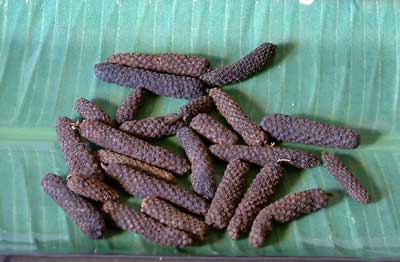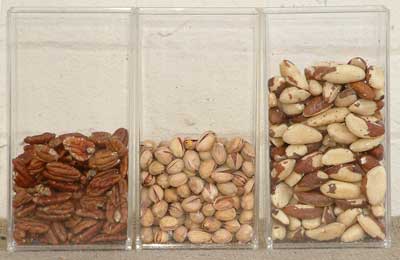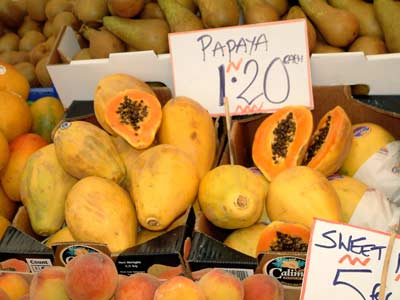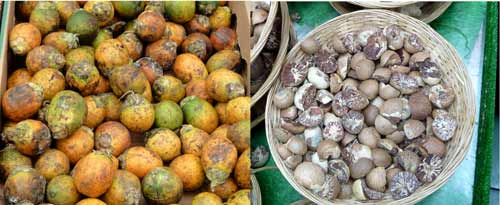
Long pepper. They are tiny berries which cleave to a single rod which looks similar to a dried catkin and provide a hot, sweet spice.

Pistachio nut. The fruits of a small tree which originated in Central Asia, probably eastern Syria, but which is now widely cultivated. Just before harvest pistachios are enclosed in a green and magenta fleshy cover. These are the very best, if you can get them. However, fresh pistachios are rarely seen, mainly because they have a short shelf-life. They are usually hulled and dried, after which they are either roasted or roasted and salted. For cooking use the ones which are not already salted. They are sold in their creamy beige shells, which split as they ripen. The shells should be removed and the purple papery skins rubbed off revealing the bright green kernels within, the greener the better. They are related to both the cashew and the mango.

Papaya. There is great discussion about the difference between papaya and paw paw or papaw. Essentially, they are all the same thing. It just depends where you are. The size of a large avocado, it has soft-textured, fragrant, apricot-coloured flesh with small black seeds which must be stripped out. It is a great breakfast fruit. If you have an unripe papaya which you wish to ripen overnight, pierce it with a sharp knife several times. It should be cut lengthways as this facilitates the removal of the seeds.

Betel nuts. They have come to be known as betel nuts, rather than areca nuts, because these red seeds are part of the betel chew.
Water amaranth or sessile joyweed. A type of amaranth which grows vigorously, providing nutritious greens. Use only tender new shoots as old leaves can leave a bitter taste in the mouth.
Water amaranth or sessile joyweed. A type of amaranth which grows vigorously, providing nutritious greens. Use only tender new shoots as old leaves can leave a bitter taste in the mouth.
Snake gourds are bright green, thin-skinned gourds which can grow as long as 2 meters (6 ft). Since they have a tendency to curl they can frequently be seen with rocks tied to them to keep them straight. They should be rubbed with salt to remove the downy surface of the skin and can then be cut open, the central core of seeds removed and then cubed or sliced for adding to stews and rasams. They do not have a great deal of flavour.